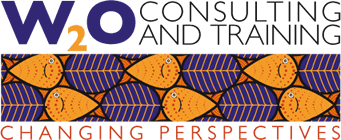Surprisingly there is very little measurement of the impact of gender diversity initiatives. Companies do those gender diversity initiatives to be seen to be doing the right thing, or because they feel something has to be done. That is what Barbara Annis and Jonathan Nesbitt disclose in their recently published book ‘Results at the Top – using gender intelligence to create breakthrough growth.’ There are many gender diversity initiatives, but despite those 90% of senior leadership is still male.
That is exactly what I see happening when working with companies; there is a feeling something needs to be done, the business case is only half worked out, they then look at what others do, free up a very limited budget and follow suit. Interestingly most of the results aren’t monitored rigorously and if results seem disappointing, gender initiatives are still continued as it’s just good to be doing something.
Luckily that’s not where the book stops. It gives clear guidance as to which initiatives do and don’t work and why. The experience of the authors resonate closely with my own experience, and that of the diversity managers and consultants I speak in my Best Practice working groups. Here is a short summary of the book to help you evaluate your gender diversity initiatives, and give you inspiration for a new and more effective approach.
Gender Diversity Initiatives that don’t work
Diversity and Compliance Training
Specifically unconscious bias and sexual harassment programmes are not effective. They often make men fearful of doing the wrong thing, and as a result they can even avoid liaising more closely with women altogether. Research even shows that people act more on their biases afterward an unconscious bias programme. After all, they have already done the right thing by going to the training, or have been confirmed in the fact that bias is normal.
Training for Women
Most of the training, coaching and mentoring of women is focussed on teaching women to be just like men, rather than how to work from their unique strengths. Assertiveness training for instance teaches women to be tough, forceful and persistent. However, they may not feel comfortable with this, and typically that kind of behaviour isn’t easily accepted from women and therefor less effective.
Women’s networks
These networks do not work because they are typically not embedded in the organisation and do not have links to the strategic – and power – side in the business. Many feel supported by them, and they do have a role to play, but they don’t lead to more women in senior roles.
Work life flexibility
Maternity policies, smart working and return to work programmes do work to recruit women and keep them in, which is mainly at the earlier stages of a woman’s career. However, they are less effective in later stages and do not work to help women advance to senior and executive levels.
Gender diversity initiatives that work
Leadership accountability
Accountability requires the right metrics, such as quarterly metrics for employee engagement, advancement, retention and talent management split by gender. Leadership accountability only works though if the leaders actually understand the financial and strategic business case for their own area/industry, and have sound knowledge of gender differences at work. Engaging leaders in diversity can require time and effort, but it is the only way to achieve real results.
Gender coaching and training
For leaders to be successful in understanding gender diversity, they need to know how women work differently and what it is women need to advance, feel motivated and valued. Women’s strengths and way of working needs to be valued as much as mens’. Training both women and men to recognise gender differences at work is very effective.
In addition it is key to train women in their strengths in critical thinking, empathy, collaboration and conflict resolution.
Male sponsorship
Sponsorship of high potential women by male sponsors, ideally from multiple divisions can be very effective if done in the right way. Male sponsors need to be trained and coached in what is expected of them and in gender intelligence. Mentors need to show women the ‘male code’ along each rung and help them understand the male modelled business environment. Mentees should be given 360 assessments, evidence they have exceeded performance objectively over a 2 year period and be expected to chart a 5 year career plan with their sponsor.
Gender intelligent policies and systems
Policies and systems need to be evaluated to see if they are just as effective for men as for women. This includes sourcing and recruitment, with bi-lingual job descriptions, and use of images and word choices that resonate with both women and men.
Succession planning needs to be considered as well and blind spots on gender difference need to be removed. People will learn to see that what they thought was a meritocracy where everyone is promoted on ability and achievement is in fact valuing typical male sets of behaviours higher than those of women.
Of course the book gives many more great tips for organisations looking to really make a step change on gender diversity. Most of which resonate exactly with my experience of working with companies to increase gender diversity. The book is specifically aimed at men, and I can recommend it to both men as well as people working in diversity. Do give it to those men that tell you that they do support women, but just don’t know how to do it.
I would love to hear from your experience as well. Which gender diversity initiatives work for you?



Author: Inge Woudstra
Would you like to know more or have a question? I am always happy to have a chat to discuss your needs. Why not drop me a line or pick up the phone? Call me at 01372 457 907 or Just contact me to discuss your requirements by e-mail.I can help you recruit, retain and advance women, and typically work with organisations in tech and engineering.
Or just check out my book 'Be Gender Smart - The Key to Career Success for Women'